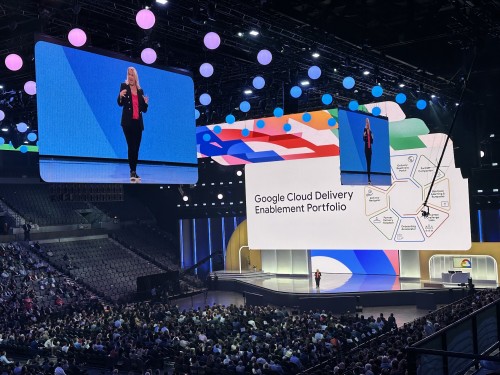Big Tech
What sets apart a taxi company from a ride-hailing service? How is a tech company that brokers advertisements different from traditional print or broadcast advertising?

A significant part of the shift towards being considered a tech company is embracing the power of big data and related data processing. It is understood that data is not just the information explicitly provided by the user, but also the usage patterns, interactions, and behaviors of the users and the load it places on the infrastructure.
Embracing a data-centric culture in all aspects of the business, from HR and recruiting, to infrastructure and operations, can bring to light important potential new revenue and cost savings. It can also create a better experience for users, employees, vendors, and candidates.
Growing your Business
Let’s consider a few examples of how we can leverage data to grow our business.
Product Recommendations
For a retail website selling widgets, the core information needed for users to place orders includes username, password, and shipping address. Your system would also store widget inventory and pricing.

The basic functionality of your website includes browsing products and a search function to match keywords. Do you know which widgets are most searched for? How does the widget that is purchased relate to the initial search by the user? Do users end up with stale carts; that is, widgets were added to the cart, but the purchase transaction wasn’t completed?
If you store search queries, widgets viewed, and widgets that are added to a cart but are not purchased, you can do deep data analysis to understand usage patterns. Which products are purchased for a given search query, even if none of the widget information matches the search terms? You can drive a higher rate of completed transactions if your search results show recommended widgets based on prior purchase patterns.
Smart Expense Reporting
For many employees, submitting expense reports is a dreaded activity. Why is there so much friction in providing expense information and receipts? Most software solutions present users with endless lists of expense codes and require users to enter information already shown on the receipt.
Why can’t we start with uploading a receipt, show the most likely categorization of the expense, and simply ask the user for confirmation?
Most systems store the information entered by the user without considering how the user completed the task. Parsing the information on the receipt to create a computer-readable representation of this content, you can correlate the user-selected expense category with receipt contents. Your system can learn over time, for a given company, how users categorize receipts.
With even a modest amount of expense data, you can build a system that starts with a receipt, suggests the most likely expense categorizations, and have the user simply confirm the entry. In case the likely suggestion is changed by the user, the system records the correction and continually improves itself.
If you create a delightful user experience, you set yourself apart and create a competitive advantage. Word of mouth and product reviews will create a positive feedback loop.
Commoditization of Storage
We often hear from enterprises that it would cost too much to store all the raw data. Databases are sized and tuned for storing the current system state, not a long-term record of system interactions.

If you’ve bought a laptop, smartphone, or any other device recently, you've surely noticed that the storage capacity has increased significantly. This trend, observed over decades, continues unabated. Enterprise storage technology and cloud-based storage, whether self-managed or fully managed, continue to see innovation across a range of technologies, from in-memory data, flash drives, hard drives, all the way through various cold storage formats.
While there is certainly an associated cost with storing increasing amounts of data, you need to consider the potential value of that data. Let’s do a rough calculation.
Storage Costs
The leading cloud providers show storage costs to be around $0.022 per GB per month. Let’s consider 1 TB of storage, which would cost $264 per year. If you prefer on-premises storage, that same amount would get you a 4 or 8 TB hard drive.
How much information can we store in that 1 TB? Let’s assume you filter the data to remove redundancy and compress it. That 1 TB could hold 500,000 images with minimal loss of fidelity. You could similarly store 62,500,000,000 high-precision sensor readings with a time stamp.
Value of Data
Let’s dive into a sample analysis of the potential benefit of the detailed data we want to store.

Consider fuel costs for a company delivery van. Modest driving might result in hundreds of dollars being spent each week on fuel. If we assume 150 miles of driving per day or 1050 miles per week with a van having a fuel economy of 20 mpg, the total fuel consumption is 53 gallons per week. With current fuel costs of $4/gallon, the weekly total is $212. Consider the storage needs for telemetry from one van. Let’s say we store location data every 5 minutes through a 12-hour day. GPS coordinates with a timestamp require 24 bytes of data, or 24 kB per week, or 1.2 MB per year. With some additional refueling data, we’ll have 1.5 MB per year. Our 1 TB of storage can therefore store information for a fleet of 10,000 vans for 66 years. Storing location data, driving and idle times, and refueling dates, you can do a deeper analysis of fuel consumption patterns, optimize routes, and reduce idle time. A modest savings of 10% on your fuel costs for one van translates to $21 per week or $1092 per year. The savings for one single van covered the data storage costs for your entire fleet.
Think Differently about Data
The most successful businesses leverage their data. Strategically growing your business and differentiating yourself means unlocking the potential of your latent information. Reach out to our team at Improving for strategic advice and project delivery.




